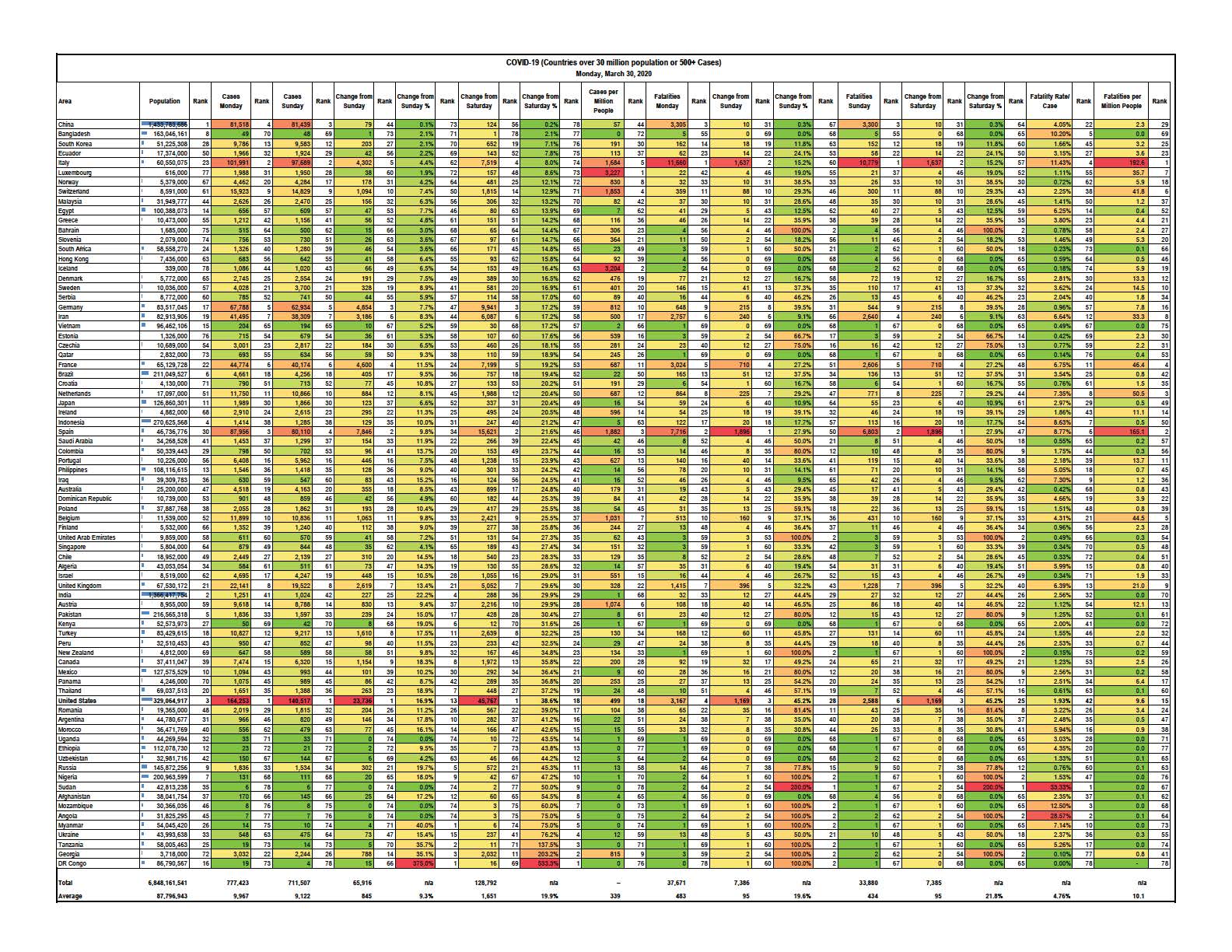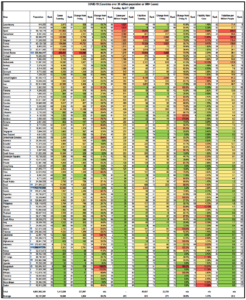HSP compiled the following COVID-19 Statistics for Countries over 30 million Population or 500+ Cases. This data stands as of Monday, March 30, 2020.
Scroll down to download this excerpt from HSP’s database.
The viral spread is becoming fairly predictable as we look from country to country…slow spreads at first, then growing exponentially. Then, when it seems it cannot get worse, the growth levels fall off and a plateau occurs. The U.S. has been dominating the headlines b/c it is the most populous country currently going through the exponential growth stage. Meanwhile, Italy is starting to crest, thankfully, despite dominating daily raw fatality totals.
The data is sorted by % new cases over a 2-day period for a reason. I wanted to understand and see the trends comparing the 1- and 2-day changes. While growth in the raw number of cases is still massive in the same European countries that have been dominating the bad news, the percentage growth has been slowing, finally. In fact, if you look at the % 2-day change, you see Italy, Spain, Germany, Iran and other hotspots all in the bottom of the growth rates. Italy’s two-day caseload growth rate is only 8%, 74th of 78 countries on the list. Interestingly, South Korea (heretofore set out as a ‘model’ country), has a similar growth rate over the past two days as Italy. Good for Italy, bad for S. Korea?
So where are we seeing 2-day growth rates over 40%? Nearly all in Africa, the Middle East and Eastern Europe. Argentina, the US, Canada, New Zealand (but NOT Australia) are showing 2-day growth rates in the 35-42% range. As the most populous country of the bunch, the US is still on track to hit the numbers I suggested yesterday (250k infections by Sunday, if not sooner, and 500+k by Easter. I expect worldwide infections to hit 1 million by Wednesday of this week).
The US fatality rate per infection increased to 1.93% today from 1.75% yesterday. However, the US rate is still less than half of the worldwide rate and 1/5 the rate of many of the hardest hit countries like Italy and Spain.
Worldwide, the spread is just now starting to hit the most populous countries, so while the US will feel its greatest pain in the next 2-4 weeks, the disruption globally is likely to reverberate for 2-4 months as this makes the rounds. China, inexplicably, appears to be bouncing back either through public relations, containment, lack of candor or some combination. Japan is also keeping a lid on things.
Many articles recently about the mask-wearing culture keeping germs contained. All cable news networks and many articles suggesting the US should adopt this or seriously consider it.
Also, I’ve been saying for a few weeks privately and now publicly that we should consider the ‘star-bellied Sneech” approach. The virus is not going away. Assuming (or hoping) that those who have had it are mostly immune from future infection, it will be critical for those survivors to get back to a near normal life and work. But we need to know who is vulnerable and who is past it. Having some sort of ID that can prove you’ve had the virus and survived will help. Knowledge is power for those who are safe and those who are not. Germany appears to be toying with this idea.



